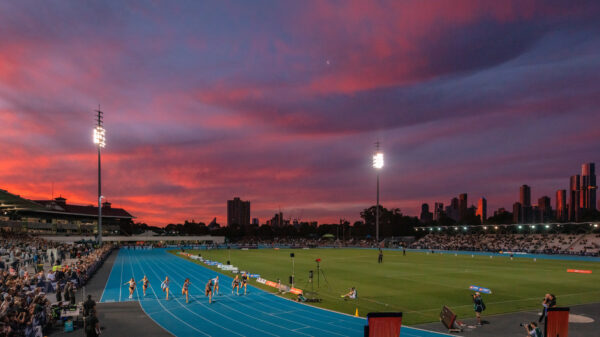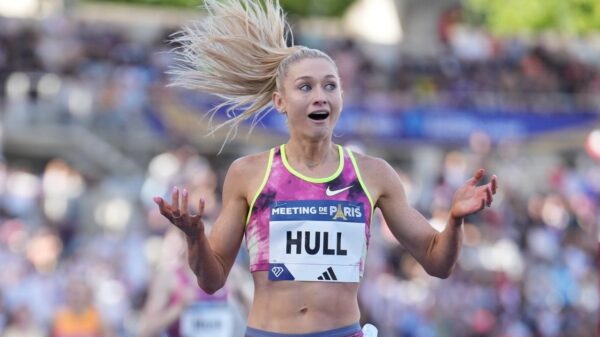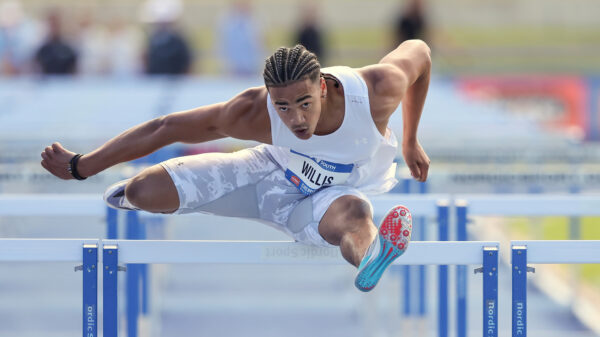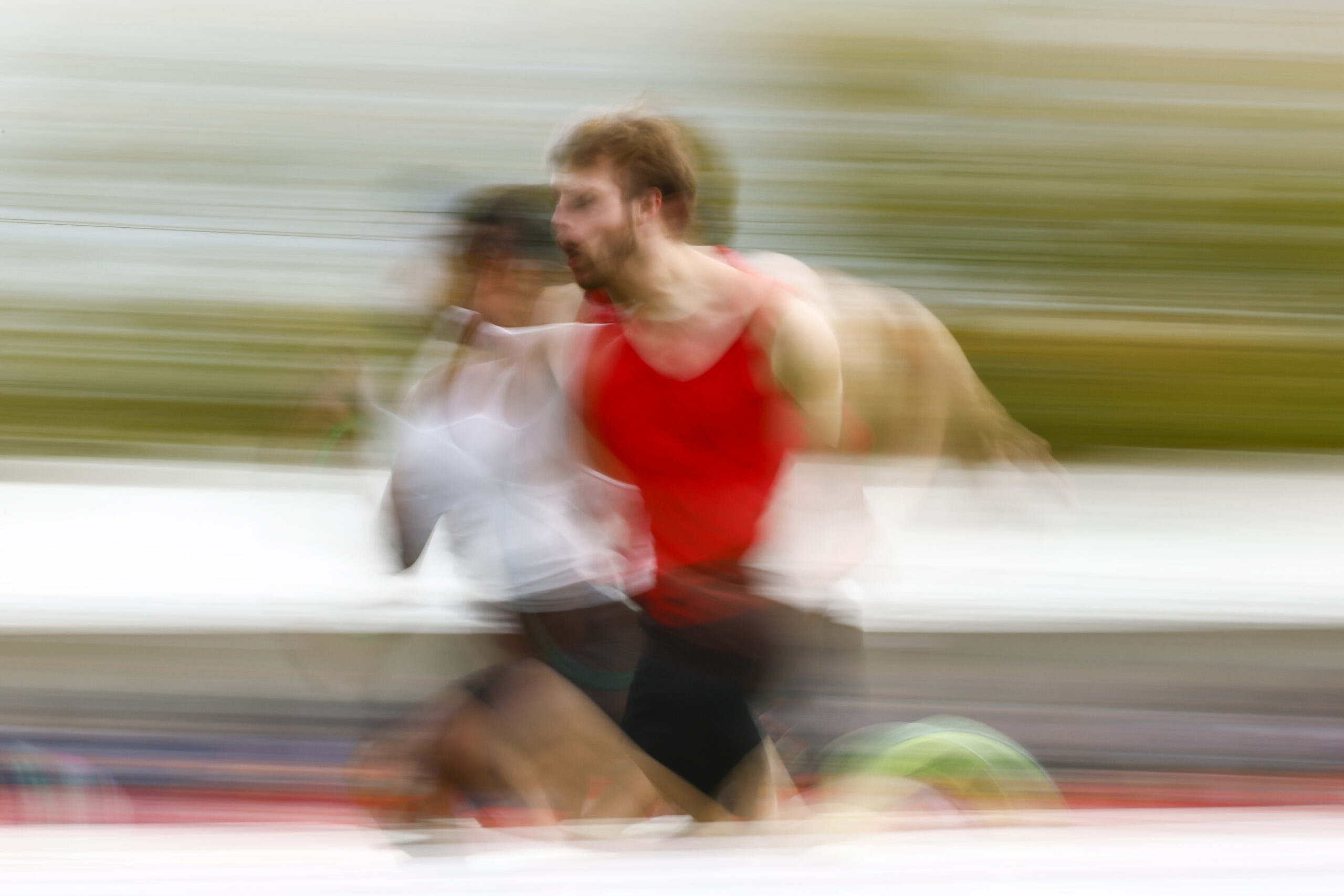In 141 editions only seven men have ever won the Stawell Gift off a handicap mark of 4 metres or less.
Cover image by Luke Hemer courtesy of Stawell Gift
That includes last year’s winner Ryan Tarrant, who won off 3.75m and returns to defend his title, running from the scratch mark.
This Easter sees 13 men line up under that mark in the iconic 120m event held in the Victorian town of Stawell. Similarly the women’s Gift features 9 women off a mark of 4m or less.
So what are their chances of winning?
The reality is that while all sprinters are equal, some sprinters are more equal than others.
The theory
The idea of handicapped races is that all athletes are provided a mark to even out differences in ability. Athletes who are slower essentially receive a head start, covering less distance in the race.
In theory, each athlete then has an equal chance of winning.
So with 152 men and 123 women in the Gift fields, arguably there’s 13/143 = 8.6% (men) and 12/123 = 9.8% (women) chance of an athlete off a mark of under 4 metres winning.
History will say that 7 in 141 years is a lower 5% chance.
The reality is that while all sprinters are equal, some sprinters are more equal than others.

The handicapping process
Part art, part science, this is a human process and fallible. The bookmaking ring at Stawell would be a very dull place if everyone was able to be precisely handicapped with an even chance. Starting odds (while you can get them with the reversal of a ban on bookmakers!) of $1.01 on each runner please?

And when you think about it, what the punters are really assessing at Stawell isn’t who they think will win, but how wrong they think the handicapper is. From that, some athletes will have a much greater chance of winning. Of course, they then have to do it, which is still not an easy task, with the pressure of the rarified atmosphere of the event sometimes getting to the ‘favourites.’
There’s also a benefit – in the form of a ‘lift’ of a 0.5m for athletes who have one major Gift races in the lead up to Stawell – which generally don’t benefit backmarkers, as they are less likely to compete in those events, prioritising instead Track Classic events.
A lot of the handicap process is designed to address a fundamental tension: the handicapper tries to produce an even field, but each athlete has a huge incentive to hide their true ability.
If you want to read the exact detail of how fields are handicapped, you can here on the Victorian Athletic League website. A lot of the process is designed to address a fundamental tension: the handicapper tries to produce an even field, but each athlete has a huge incentive to hide their true ability (e.g. $40,000 each for the winners of the men’s and women’s Gifts, more than a majority of Australia’s Olympic athletics team make in a whole year within the sport).
If an athlete might receive a handicap that is more generous than their ability, they will have a greater chance of winning. Some athletes take advantage of that situation, ranging from ensuring they race exhausted in lead in events, to as complex as orchestrating a betting plunge with their training stable at the event. On one hand, there’s the possibility of activities that border on being a criminal offense (since 2013 it’s been illegal in Victoria to corrupt the betting outcome of a sporting event). On the other hand, there’s something about the anti-authoritarian, Australian larrakin culture, that absolutely embraces the underdog beating the system. This dynamic is part of what makes Stawell unique in athletics and Australian sport.
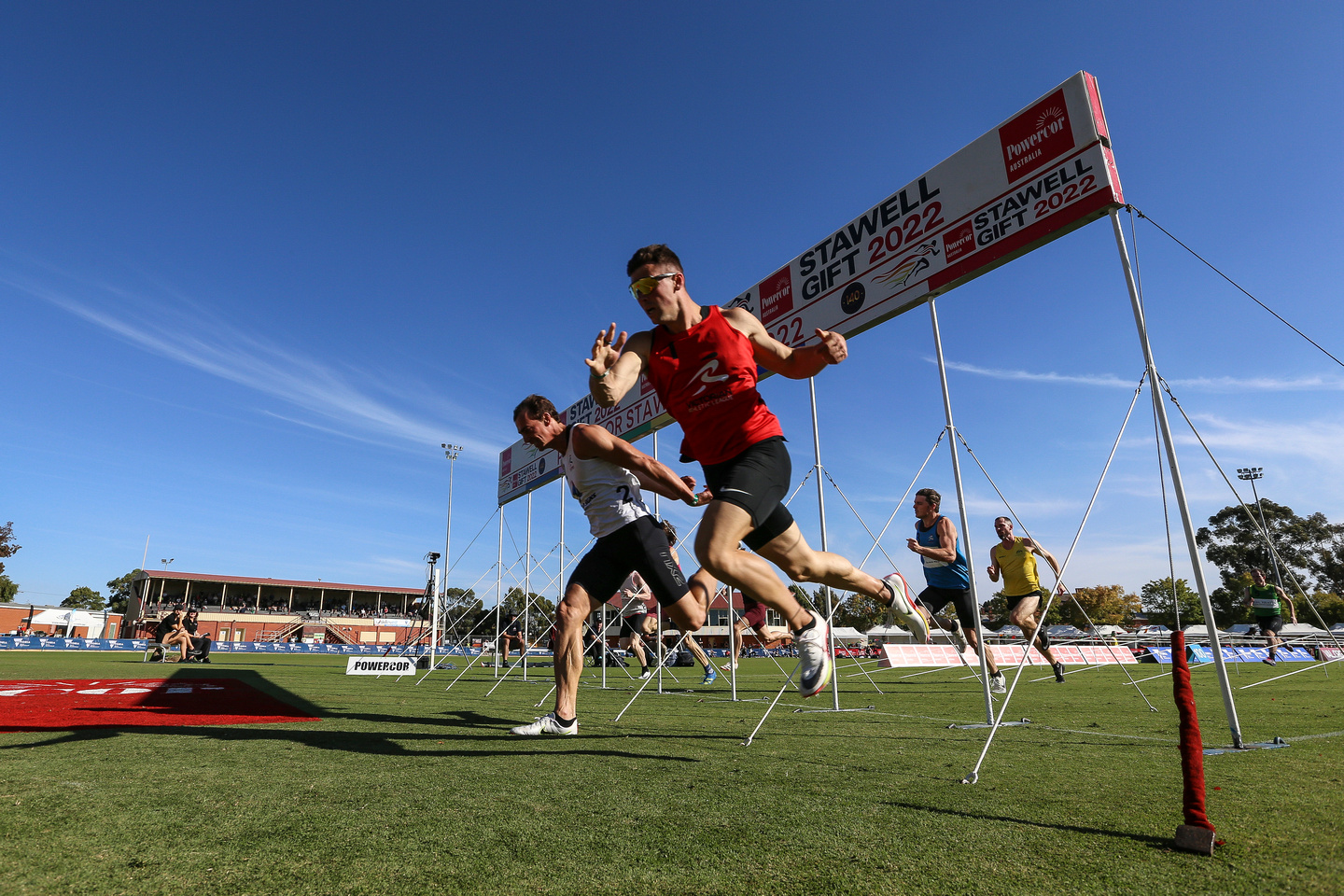
The history
Until 1984 in Australia, if you ran in a ‘professional’ athletics event for prize money, such as the Stawell Gift, you risked being banned from ‘amateur’ athletics. In theory, no athlete in the history of the Olympic Games, IAAF (now World Athletics) or associated competition (‘amateur’ athletics) ever received appearance fees or prize money for their performances, or they were banned from the sport. We could digress on the merits of this, or rather the lack thereof, both philosophically and in practice, but that’s a topic for another day.
However, what was clear was that that to overtly race for money was not on. So Australia’s top sprinters, of Olympic talent, didn’t race the Stawell Gift for much of the event’s history. That changed in the early 1980s where athletes like John Dinan (1980 Gift winner) and the late Chris Perry (1982 Gift winner) were allowed to race in amateur ranks, with both ultimately gaining selection in the 1986 Commonwealth Games. Conversely, athletes from the amateur ranks such as Dean Capobianco won the Stawell Gift in 1990.
Nowdays, the term ‘pro’ is as a misnomer as ‘amateur’ is for Australia’s elite athletes. The community that runs Gift events throughout the year are as grassroots as any sport gets, with some prize money on the side. But all roads lead to Stawell, where the two cohorts converge, with a material prize.
This year’s fields
Would it surprise you that the median winning handicap mark across the history of the Stawell Gift is 8 metres? Before open competition was allowed in 1984 the median was 9 metres. Since 1984 with open competition, it’s 7 metres.
That shift over the past four decades is possibly the result of more of Australia’s faster sprinters competing in the event, as well as the limit mark being set at 10 metres. But if you look at this year’s field, it’s clear that there are far more athletes close to the limit than there are to scratch:
- The median marks this year are 7m (men) and 8m (women)
- The middle 50% of the field have a mark between 6.5m and 8.5m 4.5m and 8m (men); and 6m and 10m 4.75m and 8.75m (women)
And regardless of any shenanigans that some athletes might get up to, to try to beat the handicapper, it’s also true that to improve a metre for a 8 metre handicap runner is a lot easier than for a runner off scratch to do the same.
This year’s fields look different in profile to last year’s; with it being an Olympic year and the Australian Championships occurring after Stawell (rather than before) the risk to potential reward is no worthwhile for most. So although the field has increased in size for each event, the median mark has increased from 6.25m to 7m for me and 6.5m to 8m for women. There’s one-third and one-quarter less runners off 4m or 6.25m or less in the men’s and women’s races respectively.
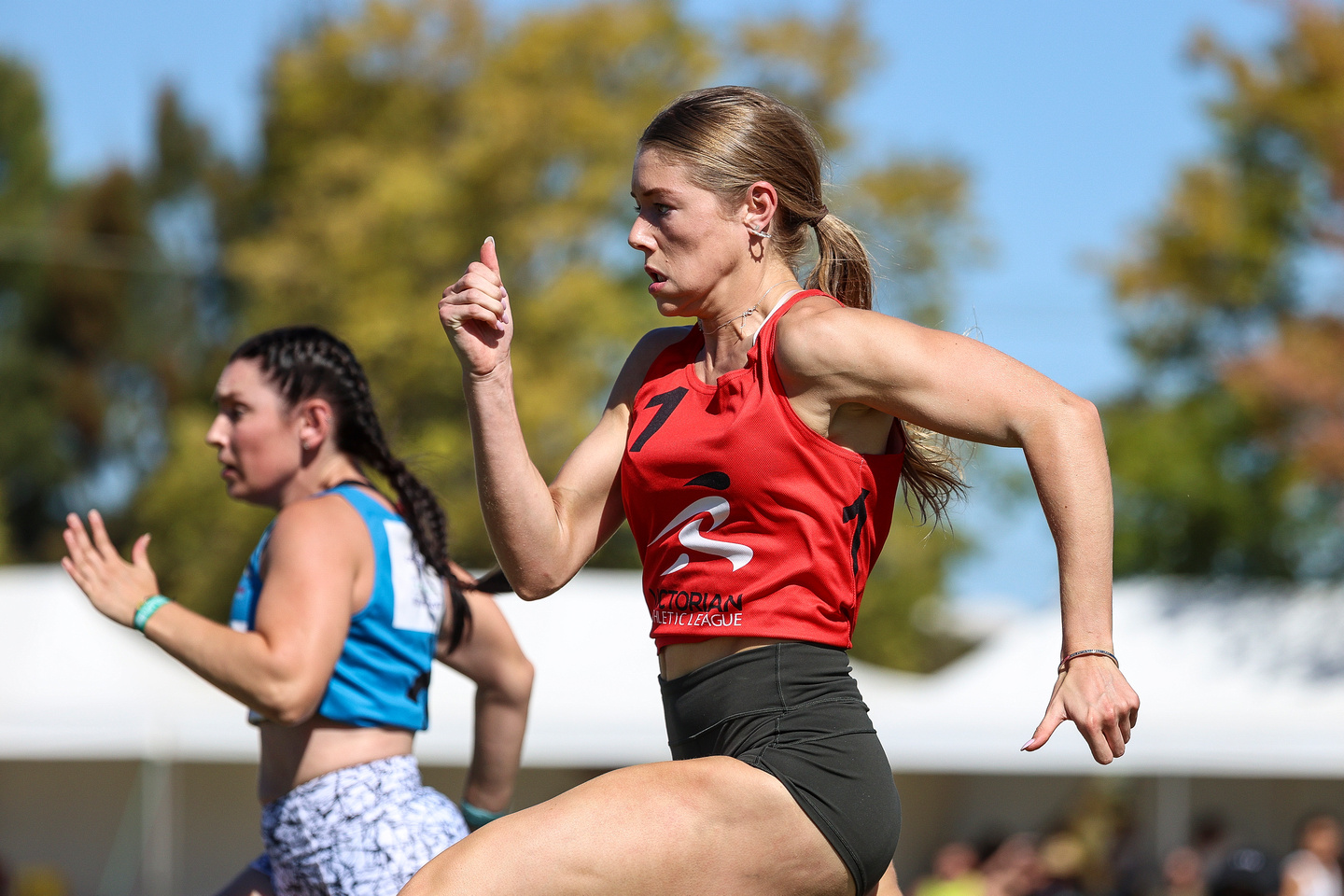
It’s not dissimilar in the women’s Gift, which dates back to 1989 and which has only had prize money parity with the men’s event since 2015. The median winning handicap has been just over 10 metres, with only two women winning from 4 metres or less.
So what are the chances for the backmarkers?
Last year’s winner in the men’s event, Ryan Tarrant, is back to defend his title but will need to be 3.75m faster than last than his mark of last year, now running off scratch. According to meet organisers the 19-year-old was hoping for a mark of 1-2 m, which suggests a tough task to defend his title.
“Ryan is preparing well for Stawell,” said his coach, Adam Larcom.
“It’s exciting to be back and it’s an honour as coach and athlete to be the defending champion. We are incredibly respectful of the history of the Stawell Gift and to now be part of the history of the past 142 years of the event. While Ryan is off scratch, we are really focused on executing race mechanics while chasing those ahead on good marks.”
In the women’s event Mia Gross starts as the backmarker off 1 metre and is in strong form having recorded a new personal best of 11.38 seconds at last week’s Sydney Track Classic. The mark is the seventh fastest by an Australian this season.
“I’m honoured to be the backmarker for 2024!” said Gross.
“It’s a tough mark and I was expecting something a little more generous but I’m very keen to get out there and have a crack. Gotta be in it to win it!”
Previous Stawell Gift winners Matt Rizzo and Dhruv Rodrigues-Chico have noted that Brad Hunt, running off 6.75m, is a strong contender to take out the men’s race.
“Hugh Hoffman, coming off a commanding win at Waverley, is poised to be a formidable competitor this Easter. Meanwhile, Brad Hunt from the Vikings group has shown remarkable form all season and is pegged as a leading favourite for this year’s Stawell Gift,” Rizzo said.
“Additionally, two under-the-radar athletes I’m keeping an eye on are Preston Degarnham (5m) and Maki Loukeris (7.75m). I believe both have the capacity to deliver impressive performances on Easter Monday.”
“Brad Hunt from the Vikings should be in the mix, and Lawson Power should make a final,” added Rodrigues-Chico.
In other events Peter Bol will start as the backmarker in the Invitational 1000m. The women’s event last year featured the who’s who of Australian distance running, but won’t be contested this year.
“I always love watching Stawell every year. The women’s 1000 in 2023 was a great race, and I’m excited to run that same distance. I hope we have a great race!” said Bol.
Athletes who have won the Stawell Gift off a mark of 4 metres or less
MEN
- Jean-Louis Ravelmanatsoa: Scratch in 1975
- Joshua Ross: Scratch in 2005
- Warren Edmonson: 1.25m in 1977
- Dean Capobianco: 2.25m in 1990
- WJ Millard: 3 yards in 1878
- Ryan Tarrant: 3.75m in 2023
- George McNeill: 4m in 1981
WOMEN
- Melissa Breen: Scratch in 2012
- Jennifer McGibbon: 4m in 2001



